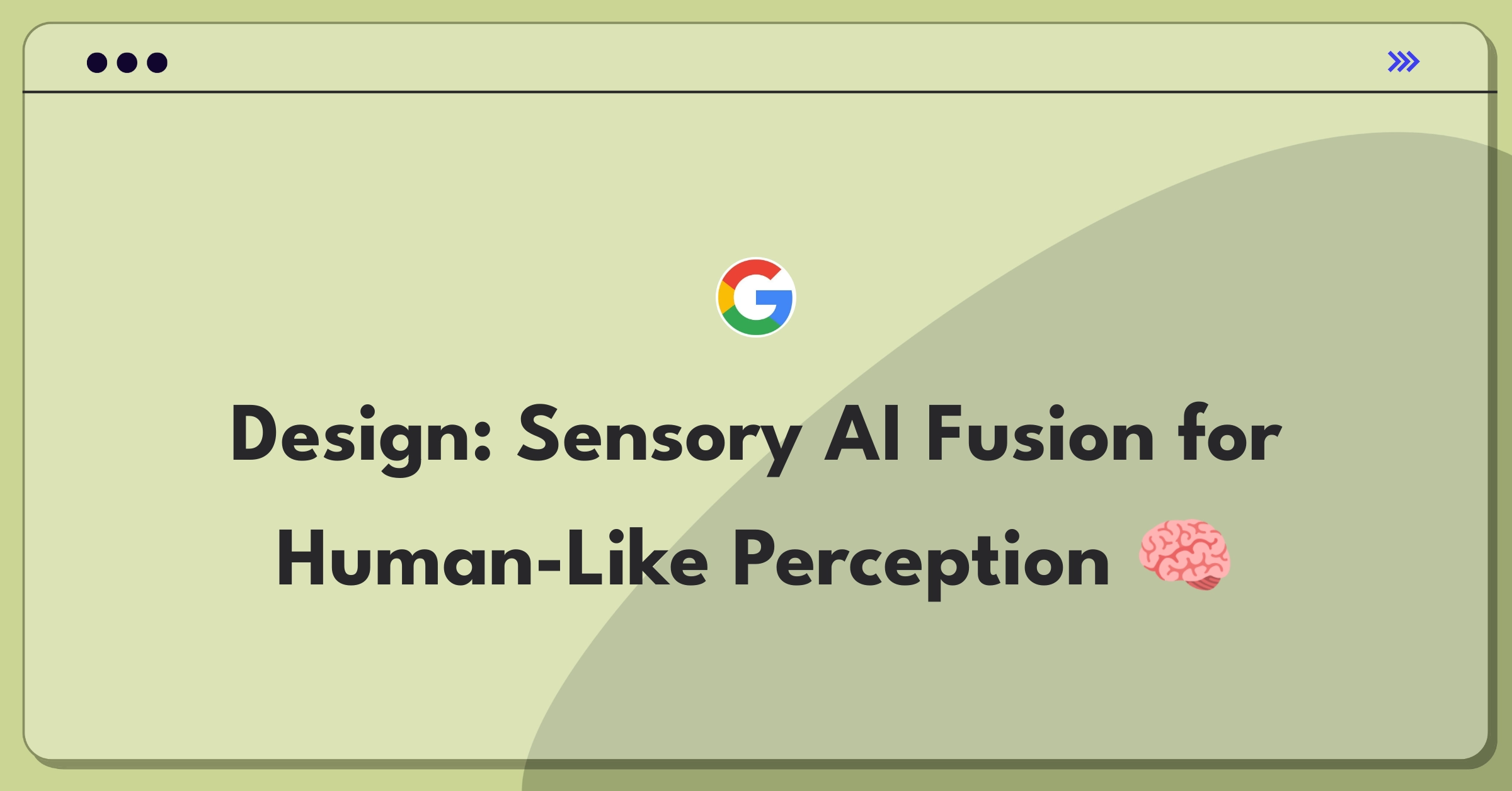Designing a Computer to Mimic Human Sensory Input at TechCorp
To design a computer that mimics human sensory input, we'd need to develop advanced sensor arrays, neural network processors, and a sophisticated integration system to synthesize multi-modal sensory data into a cohesive perceptual experience.
Introduction
The challenge of designing a computer to mimic human sensory input is a complex endeavor that pushes the boundaries of current technology in areas such as sensor design, neural network processing, and system integration. This project aligns with TechCorp's goals of advancing human-computer interaction and developing more intuitive and responsive AI systems. I'll approach this problem by first clarifying the technical requirements, analyzing the current state of technology, proposing solutions, outlining an implementation roadmap, defining metrics for success, managing risks, and considering long-term strategic implications.
Tip
Ensure that the sensory input system aligns with TechCorp's broader AI and machine learning initiatives for maximum synergy and resource efficiency.
Step 1
Clarify the Technical Requirements (3-4 minutes)
"Given the complexity of human sensory systems, I'm assuming we're aiming for a high-fidelity simulation rather than an exact biological replica. Could you clarify our target level of sensory accuracy and processing speed compared to human benchmarks?
Why it matters: Determines the complexity of sensors and processing power required Expected answer: 80-90% accuracy, with near-real-time processing Impact on approach: Would focus on advanced, but not necessarily bleeding-edge, sensor technology"
"Considering the diverse nature of sensory input, I'm thinking about a modular architecture that can be scaled or modified for different applications. How important is system flexibility versus a more integrated, optimized design?
Why it matters: Influences the overall system architecture and component design Expected answer: Preference for modularity to support various research and commercial applications Impact on approach: Would design a flexible, API-driven architecture with standardized interfaces"
"Looking at the potential applications, I'm curious about the primary use cases for this technology. Are we focusing more on research applications, commercial products, or both?
Why it matters: Affects design priorities, compliance requirements, and scalability needs Expected answer: Initial focus on research with plans for commercial applications in 3-5 years Impact on approach: Would prioritize extensibility and data collection capabilities in the initial design"
"Regarding data processing and storage, I'm considering the massive amount of sensory data this system will generate. What are our constraints or preferences for on-device processing versus cloud-based solutions?
Why it matters: Impacts system architecture, latency, and privacy considerations Expected answer: Preference for edge computing with cloud backup and analysis capabilities Impact on approach: Would design for powerful on-device processing with secure cloud integration"
Tip
After clarifying these points, I'll proceed with the assumption that we're aiming for a modular, high-fidelity sensory input system with a focus on research applications and potential for commercial development.
Subscribe to access the full answer
Monthly Plan
The perfect plan for PMs who are in the final leg of their interview preparation
$99 /month
- Access to 8,000+ PM Questions
- 10 AI resume reviews credits
- Access to company guides
- Basic email support
- Access to community Q&A
Yearly Plan
The ultimate plan for aspiring PMs, SPMs and those preparing for big-tech
$99 $33 /month
- Everything in monthly plan
- Priority queue for AI resume review
- Monthly/Weekly newsletters
- Access to premium features
- Priority response to requested question


.png)